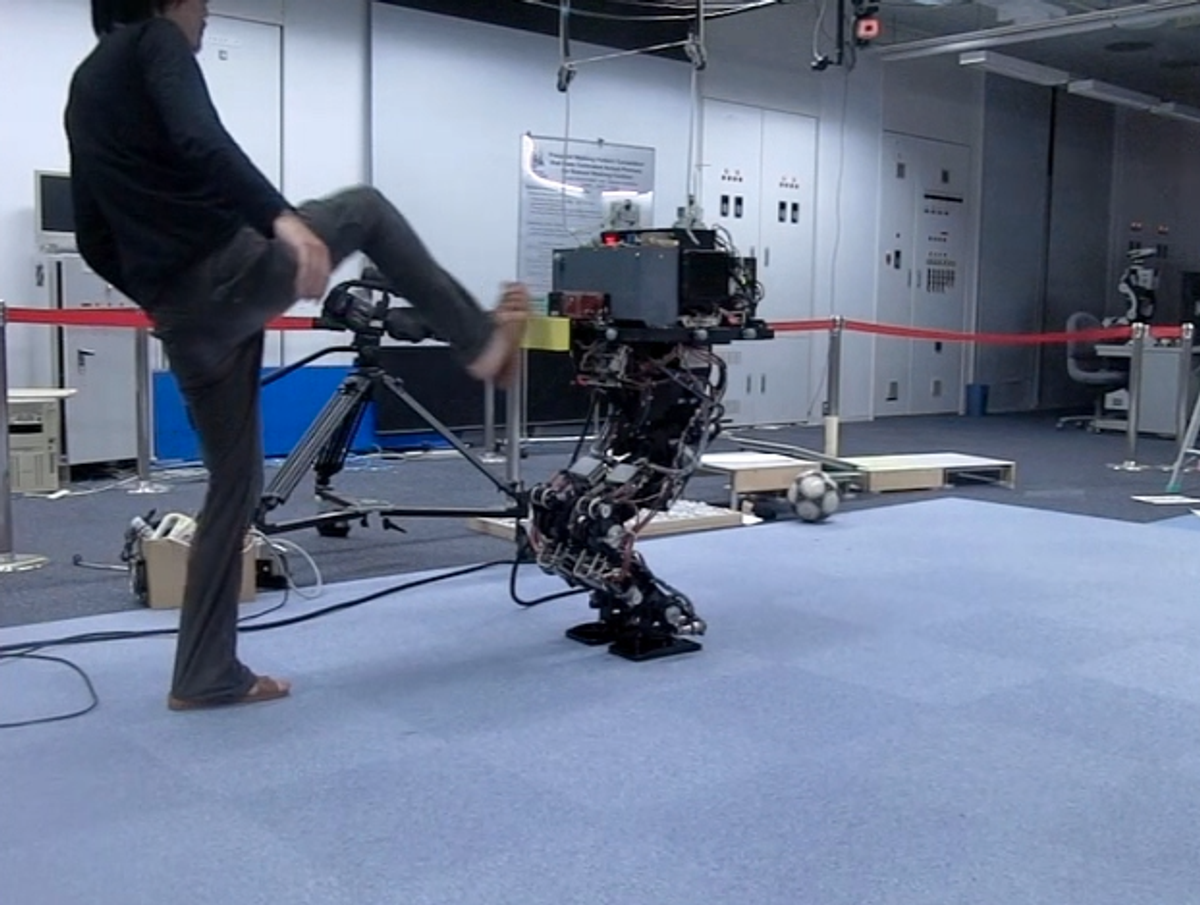For some reason, roboticists seem to enjoy testing their creations by kicking them, punching them, shoving them, and even striking them with baseball bats and heavy pendulums. All in the name of science, of course. It wasn't different with this Japanese pair of robot legs, which as you can see from the photo above, is about to get kicked in the gut.
If we want robots that can do chores around the house, care for the elderly, or (if you're a DARPA program manager) drive trucks and crash through walls, then we need robots with actuators that are both fast and strong. The problem is actuators based on electrical motors can only deliver a limited amount of power, and the alternative, hydraulics, requires bulky pumps and can be difficult to control.
Junichi Urata and his colleagues at the University of Tokyo's JSK Lab, led by Professor Masayuki Inaba, are working on a possible solution. They've developed a high-torque, high-speed robotic leg based on a novel electrical actuation system. Their robot uses high-voltage and high-current liquid-cooled motor drivers that get their power from a 13.5-farad capacitor system. Why a capacitor? Because it can supply lots of current very fast and reliably, something that batteries are not good at. The researchers modified an existing HRP3L, developed by Kawada Industries, to create their robot, which they call HRP3L-JSK [pictured below].
Thanks to the capacitor-powered motor drivers, the robot's Maxon 200-watt brushless motors (modified to be liquid-cooled) can achieve instantaneous speeds of over 1000 degrees per second and 350 Nm of torque on the robot's knee joint. This capability allows the 53-kg robot to react to disturbances (in its case, kicks, knee strikes, and other abuse from researchers) and even jump 44 centimeters off the ground (though the landing part will need work). Watch:
The robot relies on a new balance control system that detects disturbances and computes 170 foot placement possibilities in 1 millisecond, choosing the best candidate to keep the robot from falling. The new method is a collaboration between the JSK team and researchers from Japan's National Institute of Advanced Industrial Science and Technology (AIST).
Urata, who recently received a PhD degree for his HRP3L-JSK work, now has his eyes on the DARPA Robotics Challenge. He's starting to organize a team to add manipulation arms and more sensors to the HRP3L-JSK lower-body. Will their fully electrical robot be able to perform all the tasks DARPA has conceived for the challenge? DARPA, for its part, has chosen a Boston Dynamics humanoid powered by hydraulic systems as the official hardware platform (to be used by teams that don't want, or can't afford, to develop their own robot). As more teams join the competition, it will be interesting to see what kind of actuation system they choose. Electrical or hydraulics: which will prevail?
Erico Guizzo is the director of digital innovation at IEEE Spectrum, and cofounder of the IEEE Robots Guide, an award-winning interactive site about robotics. He oversees the operation, integration, and new feature development for all digital properties and platforms, including the Spectrum website, newsletters, CMS, editorial workflow systems, and analytics and AI tools. An IEEE Member, he is an electrical engineer by training and has a master’s degree in science writing from MIT.





